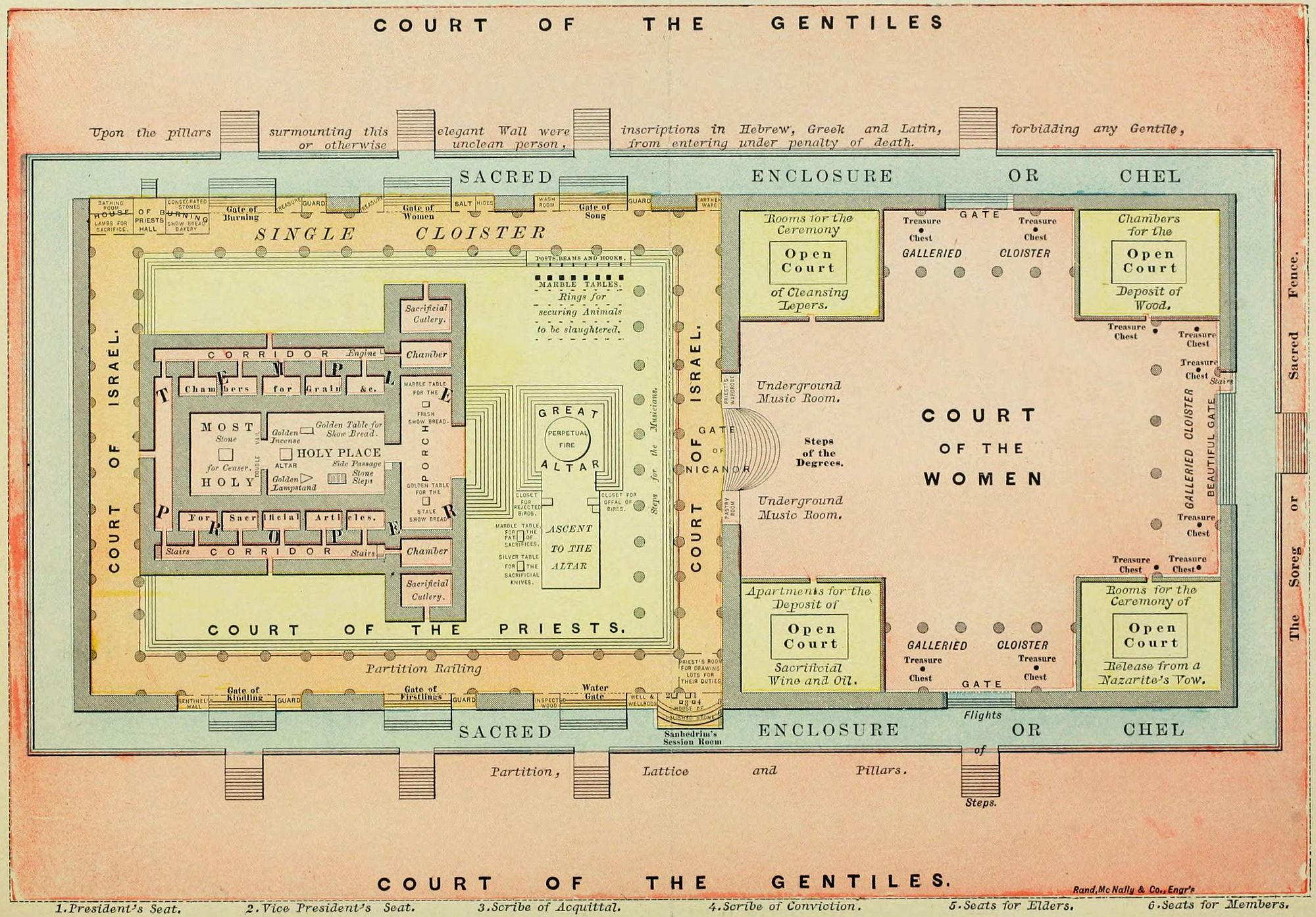BACKGROUND
21. The first disciples follow Jesus: John 1:35-51
John is the only gospel to give an account of the first disciples who followed Jesus: John (although his name is not mentioned, most commentators believe it was John, the son of Zebedee and brother of James), Andrew, his brother Simon Peter (the "rock"), Philip, and Nathanael. Note the different names that they gave to Jesus: Lamb of God, Rabbi, Messiah (the anointed One), Son of God, and King of Israel.
Nathanael said, "Can anything good come out of Nazareth?" Nazareth was despised by the Jews because of the Roman garrison there. Some commentators believe it was a place of loose morals and religion. Jesus' supernatural knowledge of Nathanael's whereabouts under the fig tree convinced him that he was the Son of God and King of Israel.
22. Jesus turns water into wine: John 2:1-12
This is the first sign, and the story is unique to this book. Of the four Gospel writers, John was the only one there. John calls it a sign as opposed to a miracle because it points to Jesus as the Messiah, having divine authority and power. The definition for signs in my New American Standard Bible margin says, "attesting miracles, i.e., one which points to the supernatural power of God in redeeming grace." The word sign(s) occurs 17 times in the book of John and can be marked with a red stop sign. He revealed this sign to only a few, and the result was that His disciples believed in Him (remember that "believe" is a key word in this book).
23. Jesus clears the temple: John 2:13-25
John is the only gospel writer who tells of the first temple cleansing during the first Passover of His public ministry (the other two Passovers occur in John 6:4 and 11:55). The temple courts refer to the large Court of the Gentiles surrounding the temple.
There was buying and selling of animals for the many pilgrims who were required to come to Jerusalem for the Passover and make sacrifices for sins. Merchants and money changers were allowed there making it crowded and difficult for worship.
The city itself and the neighbourhood became more and more crowded as the feast approached, the narrow streets and dark arched bazaars showing the same throng of men of all nations as when Jesus had first visited Jerusalem as a boy. Even the temple offered a strange sight at this season, for in parts of the outer courts a wide space was covered with pens for sheep, goats, and cattle to be used for offerings. Sellers shouted the merits of their beasts, sheep bleated, oxen lowed. Sellers of doves also had a place set apart for them. Potters offered a choice from huge stacks of clay dishes and ovens for roasting and eating the Passover lamb. Booths for wine, oil, salt, and all else needed for sacrifices invited customers. Persons going to and from the city shortened their journey by crossing the temple grounds, often carrying burdens … Stalls to change foreign money into the shekel of the temple, which alone could be paid to the priests, were numerous, the whole confusion making the sanctuary like a noisy market. (Quoted from Geikie’s Life of Christ in the Easton's Bible Dictionary, Passover entry)
In addition, the money changers would often charge exorbitant exchange rates for the foreign worshipers and the merchants would jack up the prices. This angered Jesus because greed flourished rather than worship.
This event fulfilled the prophecy in Malachi 3:1-3, that One would come suddenly to the temple and purify the nation! When the merchants and authorities wanted a miraculous sign to prove His authority, He predicted that this temple (His body) would be resurrected in three days!
Again, we see that Jesus performed many other signs resulting in many people believing in His name (this goes along with the purpose of the book of John in 20:31), but He did not believe in them (it is the same Greek word for "believe" and "entrust" in 2:23, 24). He proved His divine nature by seeing beyond the superficial to man's heart (2:25).
APPLICATION
Regarding the calling of the Disciples:
Listen to Creighton University's Online Retreat reflection on how to bring the calling of the Disciples into your everyday life: Jesus Calls Others to Join Him
Regarding the First Sign:
Why were signs important? What does this first sign indicate about Jesus? Do you believe the signs?
Try this form of meditation where you imagine yourself in the scene with your five senses: Loyola Method (Imaginative Contemplation)
PRAYER
Lord, thank You for the signs that point us to Jesus. May we help others to see those signs and come to a saving knowledge through Jesus Christ. In His name, we pray, Amen.

I added two lovely imaginative contemplations for the calling of the disciples.
ReplyDelete